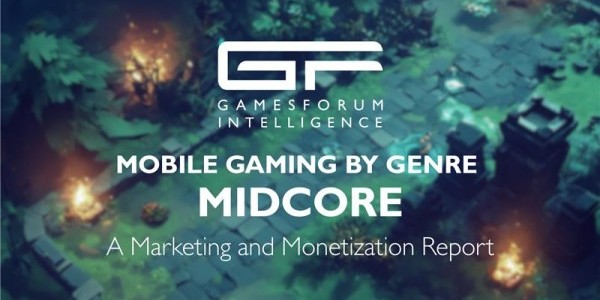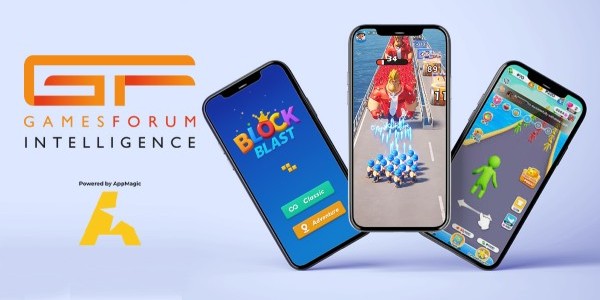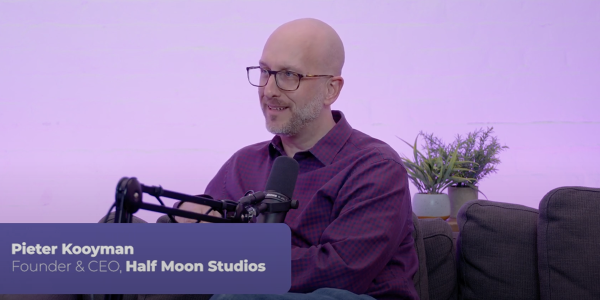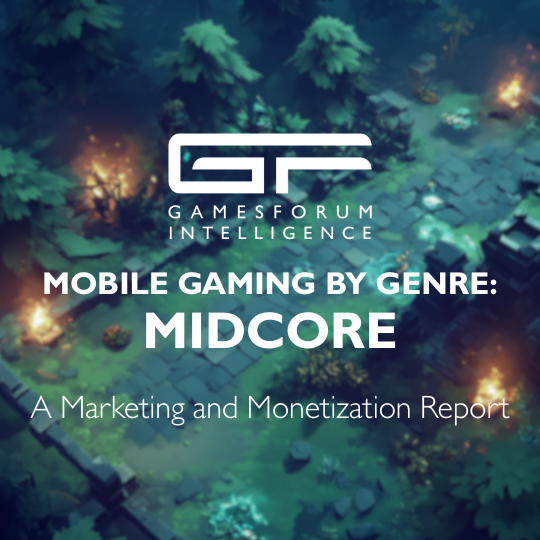Balaji Vijayan on HTML5’s Hidden Potential for Mobile Games

Balaji Vijayan, VP of Publishing at FRVR, has watched browser-based games explode overnight - no downloads, no gatekeepers, just a URL and millions of players. In our conversation, he explains why sticking to App Store and Google Play alone means leaving revenue on the table, and how HTML5’s instant-play, shareable nature can transform discovery, retention and monetization for mobile developers.
Tap into new players instantly - no app store download needed
Expanding to web-based HTML5 distribution brings a number of gains, and it comes down to HTML5 games’ highly available, accessible, shareable nature. Because HTML5 games can be played instantly on any device with a browser, they present an opportunity to tap into the vast global audiences that exist beyond the App Store and Google Play ecosystems. Equally, as HTML5 games require no download or install, they excel at both acquiring and converting players as well as giving opportunities for better retention via crossplay - leading to improved lifetime value.
HTML 5 games can easily be distributed to multiple platforms and websites, and accessed or shared via a simple URL, making everything from cross promotions to influencer collaborations straightforward and powerful. Leading to improved discoverability and greater re-engagement opportunities – all without having to play the app store algorithm game. That same shareability also primes HTML5 games for virality – something we’ve seen many times. Their K-factor is strong.
In addition, HTML 5 games make global distribution much more achievable, as their freedom from app store ecosystems means they don’t have to comply with regional restrictions or store-specific policies, which often hinder native mobile apps. And when it comes to monetization opportunities, beyond in-app purchases and ads, HTML5 distribution's open nature makes them highly compatible with sponsorships, affiliate deals, strategic partnerships, and other external opportunities that are less constrained by app store policies.
Split your web ad strategy so you don’t cannibalise mobile revenue
While earlier web gaming platforms focused predominantly on in-app advertising (IAA), today the majors are leading the way in enabling in-app purchasing (IAP) in HTML5 games. That’s a significant monetization opportunity – and as HTML5 audiences won’t overlap with app store audiences, the chances of any cannibalization are very low. As with segmented monetization, web audiences can be readily segmented for different frequencies, price points, and so on, letting you enact a careful, precise monetization strategy. And again, the instantly-accessible and shareable nature of HTML5 games makes them great for other monetization strategies, such as sponsorships and affiliate deals.
Casual to hardcore, HTML5 hits on FRVR are killing it
Because a very wide range of demographics are attracted to instantly, easily available HTML5 games, an equally wide range of genres and approaches can thrive via FRVR.
We have both truly hypercasual games like Basketball, and mid-to-hardcore real-time multiplayer shooters like Krunker.io making eight-figure revenue, demonstrating the breadth of success that’s possible with HTML5.
A closer look at a FRVR case study
Excitingly, we have recently begun launching our first Unity games on the web, with the majority of games available on FRVR being web-native at this point. Technological advances such as our in-house optimization and distribution stack along with the increasing power of hybrid monetization models on the web mean we’re seeing considerable growth and inbound interest in this area, so we’ll be in touch with hard numbers soon!
Web microtransactions? They work - no major rewrites required
Impactful, revenue-generating IAP strategies absolutely translate well to web-based HTML5 platforms. One of our most successful titles, the multiplayer shooter Krunker.io, generates around 60% of its revenue from IAP. Hybridcasual HTML5 titles, meanwhile, see about 20-to-50% of revenue come from IAP. And there’s no need to drastically reinvent your IAP strategy for HTML5. We’d always recommend experimenting and adjusting your liveops strategy to find the sweet spot for IAP, but that is what studios should always be doing to any maintained, connected game.
Keep 100% of your revenue and skip the app-store cut with HTML5
HTML5 games’ suitability to be hosted on so many different platforms means there are potential revenue share deals to consider. Place a game on a third-party option such as Facebook or Discord, for example, and those platform holders will want a cut. When you distribute on a first party site like frvr.com – or if the title is big enough to have its own first-party destination like krunker.io – then you won’t have to share any revenue.
Overcoming technical or monetization challenges when it comes to transitioning games
Beyond our SDK that allows for games to be published across all the major HTML5 platforms, we’ve developed a suite of tools to bring developers and publishers the flexibility and capability they need not just to distribute to HTML5 platforms, but to thrive long after release.
We also take a collaborative approach to support. We have, for example, a team focused on optimization for Unity games, and building tool sets for this specific purpose – as we see a huge potential in publishing Unity-based mobile games across web platforms. Over our years with web-games we’ve developed deep knowledge and expertise in these specific areas, and we’re here to share what we’ve learned.
Cross-play and cross-save on the web are the next big thing
Together the game industry has entered a new era of freedom and fairness of competition when it comes to app stores and gaming platforms. Offering more choice for both publishers and consumers. As discoverability and distribution at scale become tough across the mobile ecosystem, and WebGL undergoes rapid adoption, HTML5 offers a compliment to – rather than replacement of – your mobile strategy, extending your distribution reach to new audiences and revenue opportunities.
At the same time, that paints a more complex picture, meaning we’ll see more and more developers and publishers turn to distribution partners to maximize this opportunity.
Looking further ahead, we expect to see more crossplay – along with crosssave and crossprogression – across the HTML5 platform landscape, which will allow lower cost user acquisition for certain games and genres.











